Historical Craftivism: From Suffragettes to Gandhi to Argentina
When people ask me about craftivism,* I love to talk to them about what’s happening now and who’s doing what here in the present. However, I also try and remember to make the point that craftivism is nothing new, as like with The AIDS Memorial Quilt, which I mentioned last week, many amazing craftivism projects have occurred over time. The following examples are just a few of the many ways people have used their craft skills to create dialogue about an issue or cause they feel passionate about.
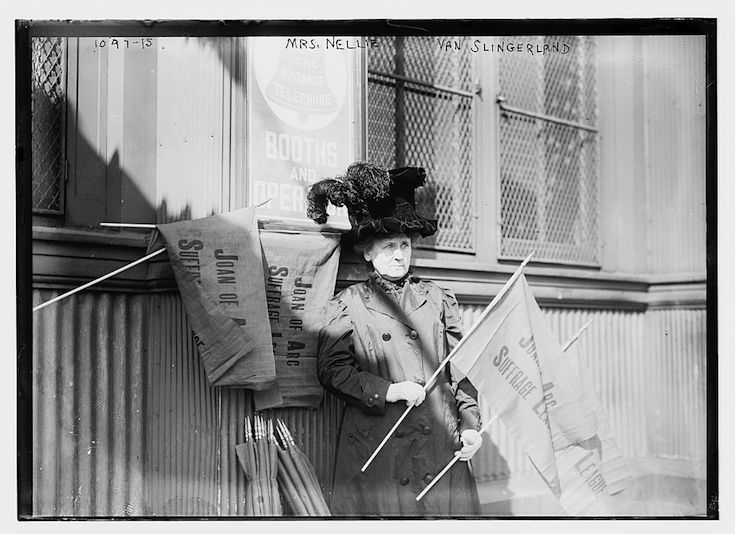 Nellie Slingerland holding a banner of the Joan of Arc Suffrage League, 1900
Nellie Slingerland holding a banner of the Joan of Arc Suffrage League, 1900
The Suffragettes
I may be a newbie at learning about the suffrage movement, but that doesn’t mean it hasn’t inspired me nonetheless. If you’re a newbie, too, here’s a great rundown of the American and British fights for the vote. (As for the rest of the world, here’s a lovely interactive of which countries gave women the right to vote when, from the 1890s to the present.) Learning about the protests and the hunger strikes and the forced feedings has definitely made me look at my own right to vote in a different light.
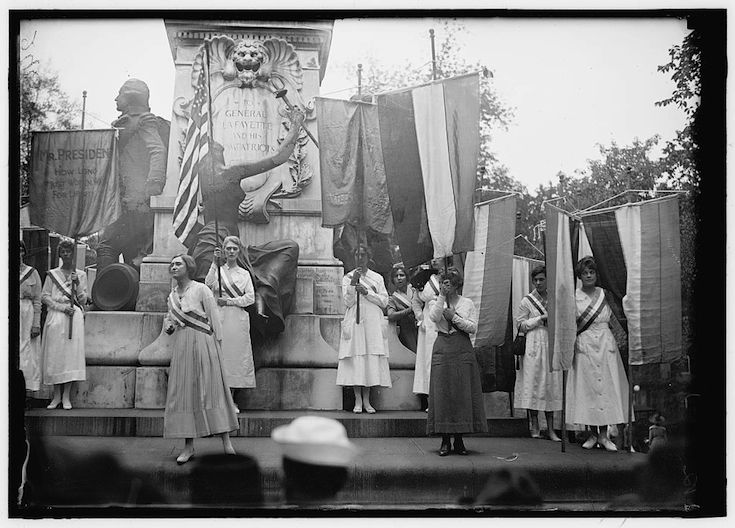 Suffragettes and their banners in Washington, DC, 1912
Suffragettes and their banners in Washington, DC, 1912
The suffragettes sewed banners and carried them during protests to advance their message. While they marched in traditional protests, I love the handiwork and camaraderie in these photos, and how they worked together for a common cause. ‘ I love the juxtaposition between the loudness of the banners themselves vs. their literal inability to make noise. I also find Carrie Reichardt’s mosaiced Mary Bamber, A Revolutionary Woman, (2011) in Liverpool to also be quite inspiring in a modern context.
Lest you think all of the banners were mighty, some weren’t so big. And they also sometimes used umbrellas.
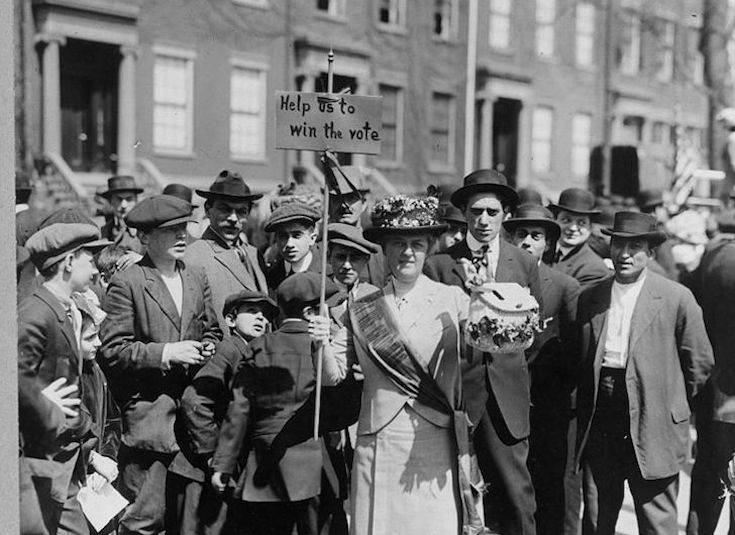 Mrs. Suffern with a homemade banner in the parade, 1912
Mrs. Suffern with a homemade banner in the parade, 1912
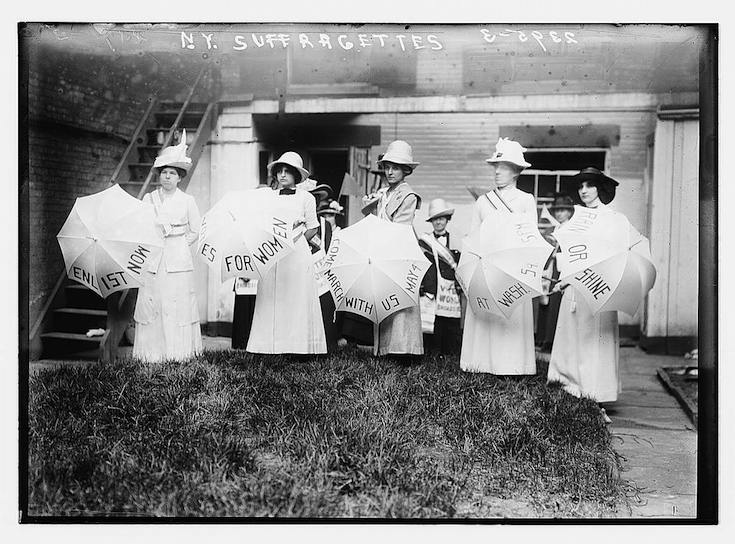 Using umbrellas to spread the word
Using umbrellas to spread the word
Gandhi
Gandhi is another famous historical example of using craft as a way to speak out and create change.
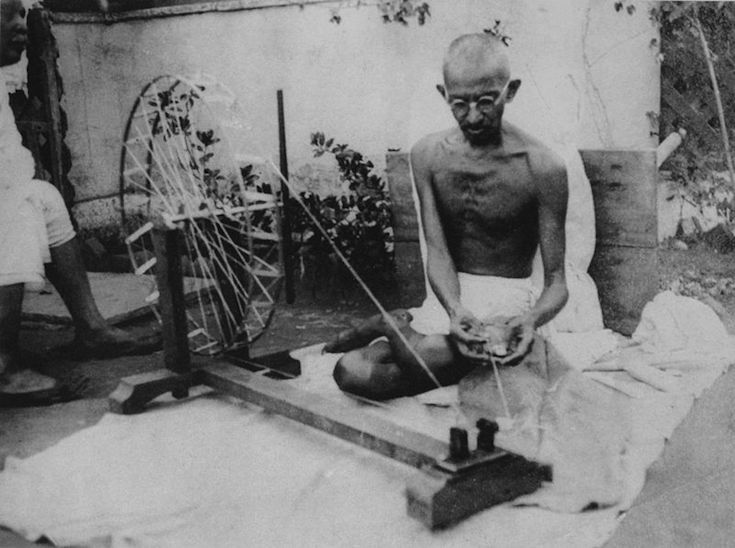 Gandhi spinning cotton on his charka in the late 1920s
Gandhi spinning cotton on his charka in the late 1920s
Gandhi had people spinning cotton as a way for India to become more self-sufficient and less sufficient on British-made textiles. He created a portable spinning wheel (a charkha) in order to spin homespun cloth (khadi) cheaply in a manner that was available to many people. According to a 1931 Popular Mechanics article, he came up with the charkha while he was in jail.
While his plan didn’t fully work as intended, it did help spread word about this cause and created much related (and needed) dialogue.
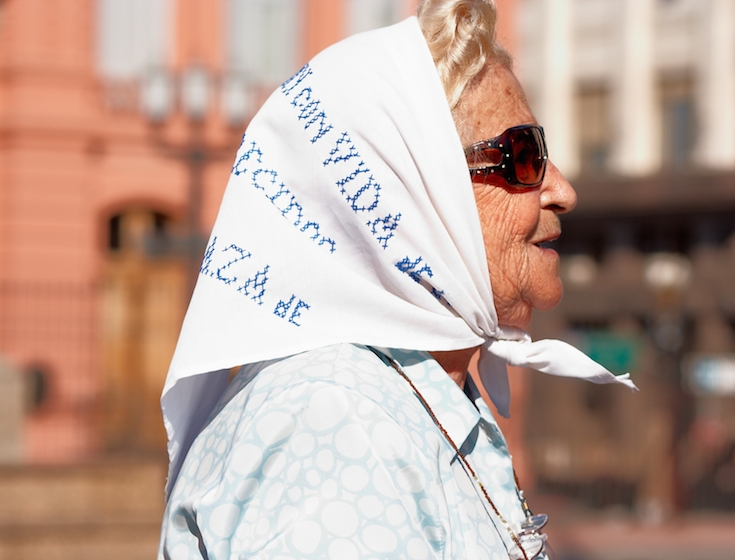 One of the Madres de la Plaza de Mayo in 2008, photo by Javier Paredes
One of the Madres de la Plaza de Mayo in 2008, photo by Javier Paredes
Madres de la Plaza de Mayo
While some causes find resolution or change entirely, others are fought for for an extended period. And such is the case for the Madres de la Plaza de Mayo, a group formed in 1977 in Argentina after the 1976 start of a military dictatorship, which lasted until 1983. During this period, thousands (the exact number ranges wildly depending on organization) of young people disappeared entirely, with the Madres stating the number at around 30,000. Every Thursday, even now, the mothers of these missing children still gather at the Plaza de Mayo square in Buenos Aires.
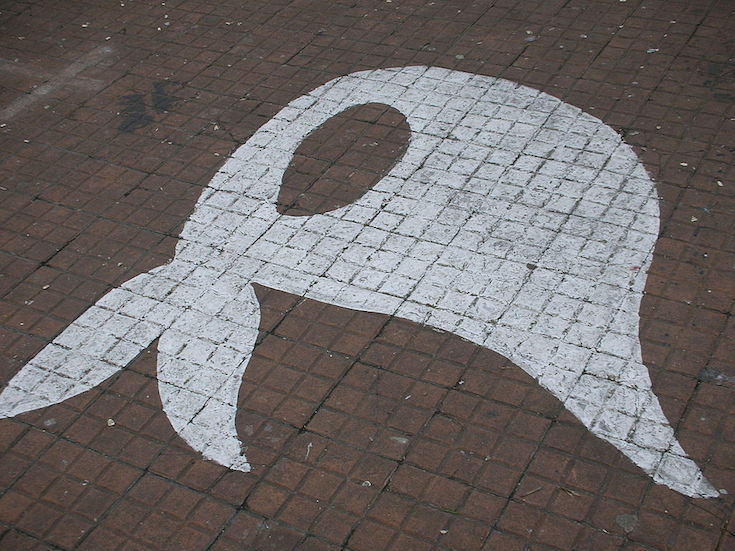 A painted’ symbol for the Madres de la Plaza de Mayo in Buenos Aires
A painted’ symbol for the Madres de la Plaza de Mayo in Buenos Aires
They wear white headscarves, some of which are embroidered with the names of their children who disappeared (los desaparecidos). Depending on the source, these headscarves are said to represent a children’s diaper, a dove of peace or children’s blankets. The embroidered text shows that each madre is individually affected, yet their uniform headscarves show that they all are protesting for the same cause.
These are just a few examples of how people have used crafts in conjunction with activism, once you open the door to the combination of “art” and “activism,” the field becomes even larger! With so many amazing projects done by individuals past and present, I’m forever inspired by how people have used their creative skills for the greater good.
By creating dialogue around difficult subjects and inserting creativity into serious issues, such projects shed light on the things that we would rather not talk about and on the things that seem too large to tackle. From women fighting for the right to vote to freeing a country from reliance on British goods to telling the story of your missing’ children, the handmade makes an appearance not only because it’s easily done, but also because it connects us to our histories and therefore connects us all to the causes at hand.
*This is the 5th post in a series about craftivism. The series’ first post was’ a craftivism introduction, and followed with posts about donating your handmade items,’ making items to brighten up your city, and using crafts to create a conversation.










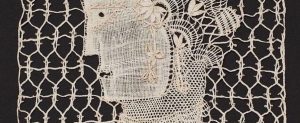











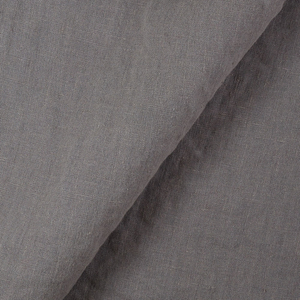


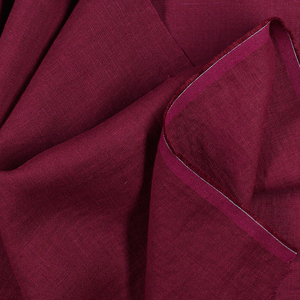


















3 Comments
Pingback:
Craftivism: Using Your Craft to Promote Social Change – Crowchet Creationssusan miller lindquist
This series has been really wonderful … thanks for making the effort to bring attention to the power of using art/craft into the social and political arena! Looking forward to the next series!
Betsy Greer
Thank for the kind words, Susan! I post similar posts (although less roundups) over at http://craftivism.com/blog, too. 🙂